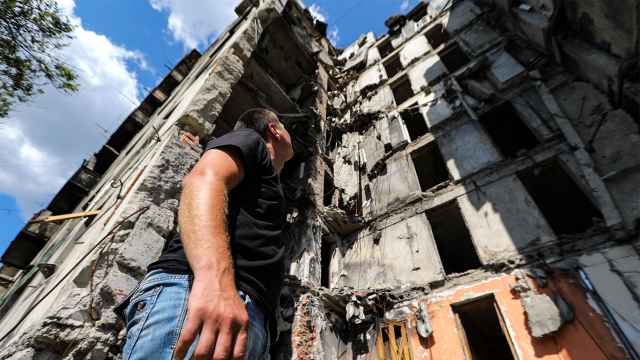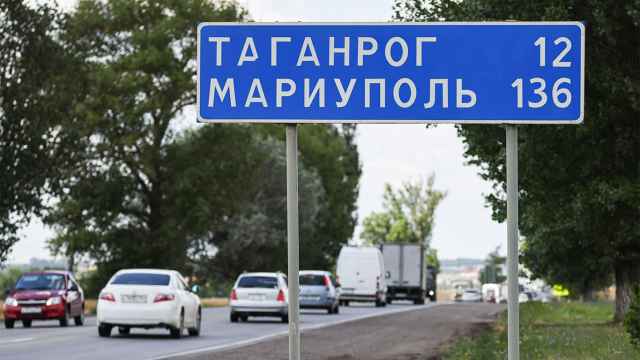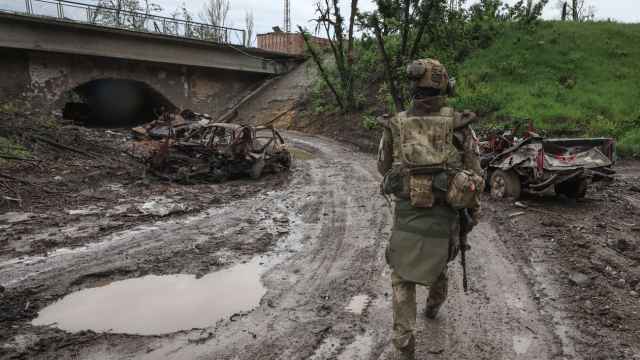Remember how everyone recently laughed at the UN for publishing a tearful report saying that no one reads its reports? Well, I can tell you about a fresh report that will sadly be read by even fewer people than any UN document.
Because each of its 224 pages is filled with blood and torture. In every third paragraph, someone is being beaten or electrocuted. And when there’s no beating or torture, there’s a tedious explanation of Russian missile guidance systems and why international law prohibits using such systems at night for strikes on cities — even if the missiles are supposedly high-precision and aimed strictly at military targets.
This report from the Memorial Human Rights Center, titled “Ukraine: War Crimes of the Russian Aggressors,” presents the results of our trip to Ukraine in January 2025.
To give our report even a chance of getting as many views as the UN’s work, I won’t spoil where exactly we were, why we went or what we saw. But I will explain why it’s still worth reading, even if we were slow to publish.
At a time when peace plans, amnesties for war criminals and lifting various sanctions are being discussed, it is crucial to know and remember what Russia is doing in the occupied territories.
For example, Russian soldiers gouged a man’s eye out because they found a blue-and-yellow discount card from the Ukraina supermarket in his wallet. The card, they claimed, indicated sympathy for Nazism.
Other Russians mockingly staged a mass execution of several dozen people the day before withdrawing from Kherson.
Others went a step further by actually executing three brothers simply because the eldest had once served in the Anti-Terrorist Operation (the Ukrainian mission to defend its territorial integrity in 2014-2018). The middle brother miraculously survived after a bullet hit him in the jaw. He crawled out of what was literally a mass grave, made his way back to the village by back roads and told them everything.
Russian soldiers also stole cars and engaged in other forms of looting and torture as brutal as their imagination can concoct. Always with taunts of “fascist” and “Banderite scum,” and the words, “And what made you think you can live better than us?” They demanded that victims point to hidden weapons caches — even if none existed — or confessed to collaborating with the ultranationalist Right Sector and other “Yarosh business cards,” even if the victim had no idea what they were talking about.
This is the terror Russia establishes in the occupied territories.
It is also crucial that all prisoners — military and civilian alike — be returned to Ukraine. It doesn’t matter who they are exchanged for. It is just imperative that not a single Ukrainian hostage is left in Russia.
Moscow does not think that the Geneva Conventions apply to Ukrainian captives. After all, this is not a war, but a “special military operation,” meaning prisoners are not prisoners but terrorists. Military drills? That’s training for terrorist activity. Captured in Russia’s Kursk region? Then they “illegally crossed the border.”
Let me digress from prisoners and quickly explain how fighters from the Azov and Aidar battalions are sentenced for involvement in a “terrorist community,” because such acrobatics of legal thought deserve public attention.
In 2015, Liubov Selina, a 30-year-old woman from the Luhansk region, worked for five and a half months as a secretary in the Aidar battalion. To be precise, she actually worked for the former Aidar battalion — because it was officially disbanded in 2015 and reorganized into the 24th Separate Assault Battalion of the Ukrainian Ground Forces.
But, eight years later, the Southern District Military Court sentenced Selina to five years in prison — almost one year for each month — under Article 205.4, Part 2 of the Russian Criminal Code (“participation in a terrorist community”). The sentence entered into force on Nov. 22, 2023. It has still not been published, but based on this ruling, Aidar was added to Russia’s list of terrorist organizations in December 2023.
I’m sure you understand what this means. They found a random person whose link to Aidar could be documented, somehow concluded during the “trial” that Aidar was a terrorist organization, convicted this poor woman and then used the sentence itself as grounds for designating Aidar a terrorist organization. That Aidar doesn’t formally exist didn’t stop Russia. Nor did the non-existence of the “international LGBT movement.”
It gets even crazier. Fifteen so-called Aidar fighters were recently sentenced to terms from 15 to 21 years for participating in a terrorist organization. They were captured in spring 2022 — a year and a half before the nonexistent Aidar battalion was even added to the terrorist list.
At least these men are known to be alive; they can talk to lawyers and receive parcels, etc. Hundreds of other Ukrainian prisoners are held “incommunicado” and cannot be reached. Russia’s Defense Ministry says they were “detained for resisting the special military operation,” and that’s it: they can do anything to them.
Imagine being forced to stand motionless from six in the morning until eight in the evening without shifting your weight or leaning on anything. Move, and they beat you. This goes on for months while you develop varicose veins, ulcers or gangrene. This is how they torture people at the notorious Penal Colony No. 10 in Mordovia. In addition, prisoners have dogs set on them, suffer beatings and are forced to memorize “Katyusha” and the Russian national anthem.
These tactics appear to be a grim inheritence passed down from Russia’s past. They aren’t the only thing to have been inherited: Penal Colony No. 10 was not chosen by accident. In the 1960s, it was one of the few places where political prisoners and foreigners were held, along with members of armed underground groups from the North Caucasus. The settlement where the camp is located is symbolically called Udarny (“Shock/Strike”). Modern filtration points did not appear out of thin air — they were copied from those used during the Chechen wars, which Memorial has written about many times.
We can now afford to say we warned you.
Although, as the dissident Alexander Esenin-Volpin liked to say, we did not “put logic into this system.” Therefore, it is pointless to look for it: a pattern of brutality is unmistakably visible from Chechnya through Georgia and Syria to Ukraine.
A Message from The Moscow Times:
Dear readers,
We are facing unprecedented challenges. Russia's Prosecutor General's Office has designated The Moscow Times as an "undesirable" organization, criminalizing our work and putting our staff at risk of prosecution. This follows our earlier unjust labeling as a "foreign agent."
These actions are direct attempts to silence independent journalism in Russia. The authorities claim our work "discredits the decisions of the Russian leadership." We see things differently: we strive to provide accurate, unbiased reporting on Russia.
We, the journalists of The Moscow Times, refuse to be silenced. But to continue our work, we need your help.
Your support, no matter how small, makes a world of difference. If you can, please support us monthly starting from just $2. It's quick to set up, and every contribution makes a significant impact.
By supporting The Moscow Times, you're defending open, independent journalism in the face of repression. Thank you for standing with us.
Remind me later.








